Even ancient mummies had clogged arteries, study shows
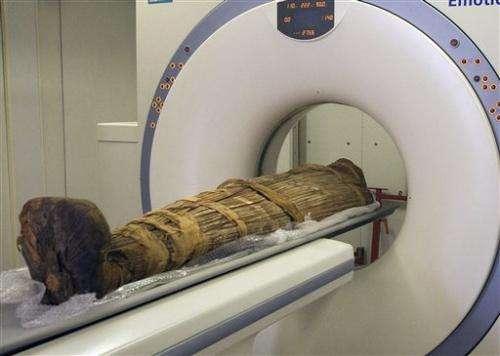
Even without modern-day temptations like fast food or cigarettes, people had clogged arteries some 4,000 years ago, according to the biggest-ever hunt for the condition in mummies.
Researchers say that suggests heart disease may be more a natural part of human aging rather than being directly tied to contemporary risk factors like smoking, eating fatty foods and not exercising.
CT scans of 137 mummies showed evidence of atherosclerosis, or hardened arteries, in one third of those examined, including those from ancient people believed to have healthy lifestyles. Atherosclerosis causes heart attacks and strokes. More than half of the mummies were from Egypt while the rest were from Peru, southwest America and the Aleutian islands in Alaska. The mummies were from about 3800 B.C. to 1900 A.D.
"Heart disease has been stalking mankind for over 4,000 years all over the globe," said Dr. Randall Thompson, a cardiologist at Saint Luke's Mid America Heart Institute in Kansas City and the paper's lead author.
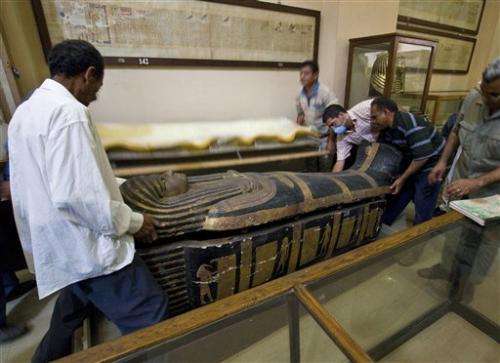
The mummies with clogged arteries were older at the time of their death, around 43 versus 32 for those without the condition. In most cases, scientists couldn't say whether the heart disease killed them.
The study results were announced Sunday at a meeting of the American College of Cardiology in San Francisco and simultaneously published online in the journal Lancet.
Thompson said he was surprised to see hardened arteries even in people like the ancient Aleutians who were presumed to have a healthy lifestyle as hunter-gatherers.
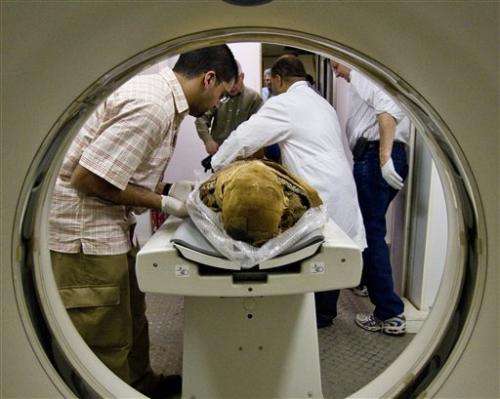
"I think it's fair to say people should feel less guilty about getting heart disease in modern times," he said. "We may have oversold the idea that a healthy lifestyle can completely eliminate your risk."
Thompson said there could be unknown factors that contributed to the mummies' narrowed arteries. He said the Ancestral Puebloans who lived in underground caves in modern-day Colorado and Utah, used fire for heat and cooking, producing a lot of smoke.
"They were breathing in a lot of smoke and that could have had the same effect as cigarettes," he said.
Previous studies have found evidence of heart disease in Egyptian mummies, but the Lancet paper is the largest survey so far and the first to include mummies elsewhere in the world.
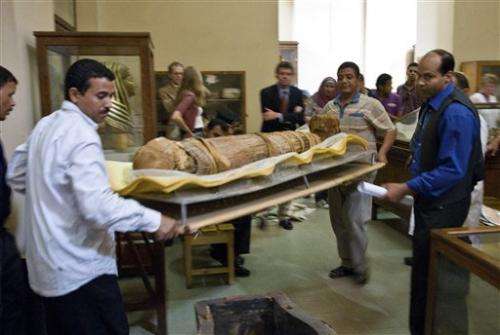
Dr. Frank Ruehli of the University of Zurich, who runs the Swiss Mummy Project, said it was clear atherosclerosis was notably present in antiquity and agreed there might be a genetic predisposition to the disease.
"Humans seem to have a particular vulnerability (to heart disease) and it will be interesting to see what genes are involved," he said. Ruehli was not connected to the study. "This is a piece in the puzzle that may tell us something important about the evolution of disease."
Other experts warned against reading too much into the mummy data.
Dr. Mike Knapton, associate medical director at the British Heart Foundation, said calcified arteries could also be caused by other ailments including endocrine disorders and that it was impossible to tell from the CT scans if the types of calcium deposits in the mummies were the kind that would have sparked a heart attack or stroke.
-
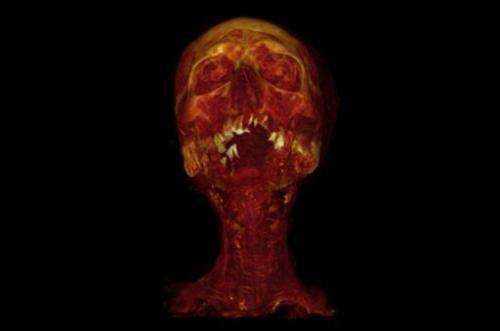
Image provided by the Lancet press office on March 8, 2013 shows a CT with 3D volume rendering of Hatiay, a mummified male Egyptian scribe aged 40-50 years, who lived during the New Kingdom (1570–1293 BCE) and was found near modern day Luxor. Scans of mummies from as long ago as 2,000 BC have revealed that ancient people also had clogged arteries, a study said Monday. -
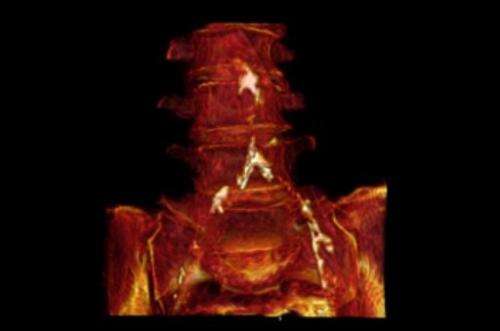
Image provided by the Lancet press office on March 8, 2013 shows a CT with 3D volume rendering of the aortic and iliac calcification in a mummified woman aged 45-50, of an unknown era in ancient Egypt, who was found in the Fayoum Oasis. A study of 137 mummies from four geographic regions has revealed that atherosclerosis may have been more common among ancient people than previously thought. -
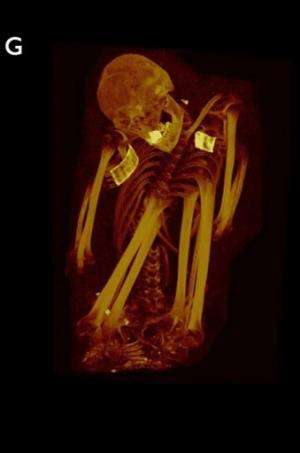
Image provided by the Lancet press office on March 8, 2013 shows a 3D MIP of a mummified woman from ancient Peru, aged 41-44, of the Early intermediate to Middle Horizon (200–900 CE), that was excavated from Huallamarca, Peru. A study released Monday has revealed that ancient people also had clogged arteries.
"It's a fascinating study but I'm not sure we can say atherosclerosis is an inevitable part of aging," he said, citing the numerous studies that have showed strong links between lifestyle factors and heart disease.
Researcher Thompson advised people to live as healthy a lifestyle as possible, noting that the risk of heart disease could be reduced with good eating habits, not smoking and exercising. "We don't have to end up like the mummies," he said.
More information: www.thelancet.com/journals/lan … (13)60598-X/abstract
Journal information: The Lancet
Copyright 2013 The Associated Press. All rights reserved. This material may not be published, broadcast, rewritten or redistributed.


















